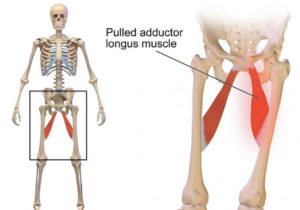
CORE Physical Therapy In Omaha Explains…
By Dr. Mark Rathjen PT DPT CSCS
CORE Physical Therapy Co-owner
17660 Wright St. 9/10
Omaha NE
402-933-4027
Conclusion
“The review suggested better outcomes with rehabilitation for pubic-related groin pain with no difference between the adductor and abdominal groups.”
Whats does this mean?
Surgery is not more effective with long term recovery in this control group than with just traditional physical therapy, not all injuries need surgery to recovery and often non surgical recoveries are fast and more effective for long term recovery.
What can CORE do for me?
Wd can devise a full program long term for a full recovery, often without surgery in our Omaha athletes. We develop long term goals, and long term solutions for a full recovery and injury prevention in the future. One on One appointments and individualized treatment programs. Long term dynamic stretching, progressing functional loading and overall sports performance work will ensure a better than before recovery.
This is who we are, This is what we do…
C.O.R.E. Physical Therapy and Sports Performance PC,
17660 Wright St, Suites 9/10
Omaha, NE 68130
402-930-4027
CORE Physical Therapy is a small family owned business.
CORE Physical Therapy has no investors.
CORE Physical therapy runs completely independent.
CORE Physical Therapy competes against huge companies and Hospitals.
CORE Physical Therapy has won Best of Omaha, 2016, 2017, 2018, 2019, 2020, 2021.
CORE Physical Therapy has to be better than its competition to compete.
CORE Physical Therapy is different, Come see the CORE difference.
At CORE Physical Therapy in Omaha, We specialize in the treatment of athletes. We have worked with athletes for a combined 30 years. CORE was established in 2015 by Dr. Mark and Dr. Claire Rathjen is family owned and operated.
Proud winners of the Omaha Choice awards for 2016, 2017, 2018, 2019, 2020,2021
Expertise award winners 2018, 2019, 2020, 2021
Faces of Omaha Winners 2018, 2019, 2020, 2021
We are proud to serve the greater Omaha metro area; Gretna, Elkhorn, Papillion, Bellevue.
For More information, Please feel free to contact us http://coreomaha.com/contact/
Please feel free to follow us at https://www.facebook.com/COREomaha/
To get started http://coreomaha.com/getting-started/
For more Blog information http://coreomaha.com/blog/
Youtube Account linked below.
https://www.youtube.com/channel/UCVg8OSN5h-i1n_ykw1Gvahg?view_as=subscriber
. 2015 Nov;49(22):1447-51.
doi: 10.1136/bjsports-2014-093715.Epub 2015 Jun 30.
Athletic groin pain: a systematic review and meta-analysis of surgical versus physical therapy rehabilitation outcomes
- PMID: 26130700
- DOI: 10.1136/bjsports-2014-093715
Abstract
Background: Athletic groin pain (AGP) is an encompassing term for the multitude of chronic conditions presenting as pain in the inguinal region. The purpose of this review was to compare the return to play rates (RTPrate) and return to play times (RTPtime) between surgical and rehabilitation interventions in the treatment of AGP.
Methods: A systematic review of English language peer review journals was carried out between 1980 to June 2013 using PubMed, Embase, CINHAL and Google Scholar searching for all papers relating to AGP (and its various pseudonyms) and all surgical and rehabilitative interventions which reported RTPrate and/or RTPtime. AGP literature has been subdivided by many eponymous diagnoses but anatomical diagnostic groupings of (1) abdominal wall, (2) adductor and (3) pubic related pain were used in this review. Meta-analysis was then carried out on the data to compare results between the surgical and rehabilitation groups.
Results: Fifty-six papers out of the 561 discovered in the initial search were included in the review with 3332 athletes included. Evidence was mostly level IV. Using the Black and Downs checklist we found poor study quality overall with a high risk of bias especially among surgical studies. The results showed comparable RTPrate between surgical and rehabilitative interventions within the three diagnostic groups. Rehabilitation had significantly quicker RTPtime for pubic related groin pain compared to surgery (10.5 weeks and 23.1 weeks respectively). The abdominal group had the fastest return of the three groups for the rehabilitation and surgery.
Conclusions: The review suggested better outcomes with rehabilitation for pubic-related groin pain with no difference between the adductor and abdominal groups. The review highlighted the poor quality and risk of bias in the literature making accurate comparison difficult.
Keywords: Exercise rehabilitation; Groin; Lower limb surgery; Physiotherapy.
Published by the BMJ Publishing Group Limited. For permission to use (where not already granted under a licence) please go to http://www.bmj.com/company/products-services/rights-and-licensing/
